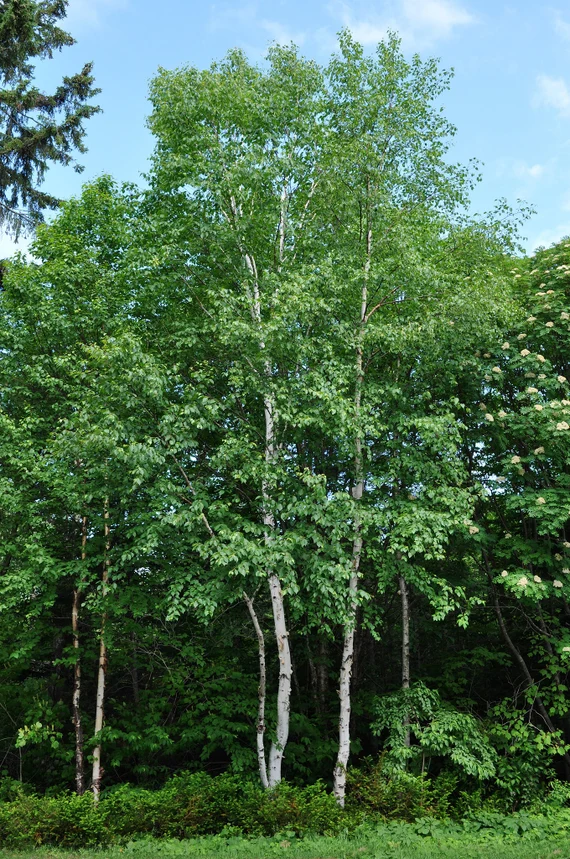

Betula papyrifera, commonly called paper birch or canoe birch, is a robust, fast-growing landscaping tree with a most attractive gleaming white bark, which peels off in papery strips to reveal an orange-brown bark underneath. Growing with an oval rounded habit, mature trees develop black markings on the white bark. The ovate, irregularly toothed, dark green leaves turn bright yellow in fall. In spring, tiny yellowish-brown male flowers appear in drooping catkins while greenish female flowers appear in upright catkins. The female flowers give way to drooping cone-like fruits containing numerous small winged seeds.
The paper birch received its name from the nature of its bark. Long ago, people would peel layers of the thin, paper-like bark and write on it as a way to send messages. The common name of canoe birch comes from the use of the bark for making sleek, lightweight canoes among Native Americans and early fur trappers.
Exceptionally hardy, paper birch performs best in cool northern climates where root zones are often covered with snow in the winter and do poorly in the heat and humid areas. Betula papyrifera is one of the best-loved trees of the New England landscape (it is the state tree of New Hampshire), often planted for the beauty of its distinctive bark and golden fall color.
| Requirement | |
|---|---|
| Hardiness | 2,3,4,5,6,7 |
| Heat Zones | 1,2,3,4,5,6,7 |
| Climate Zones | 2, 3, 4, 5, 6, 7 |
| Plant Type | Trees |
| Plant Family | Birch family |
| Exposure | Full Sun, Partial Sun |
| Season of Interest | Spring, Summer, Fall, Winter, Early Spring, Mid Spring, Late Spring, Early Summer, Mid Summer, Late Summer |
| Height | 3' - 4' |
| Spread | 4' - 5' |
| Water Needs | Average |
| Maintenance | Low |
| Soil Type | Chalk, Loam |
| Characteristics | Fragrant, Showy, Evergreen |
| Garden Styles | Informal and Cottage, Prairie and Meadow |
| Planting Place | Banks and Slopes, Beds and Borders, Hedges and Screens, Patio and Containers |